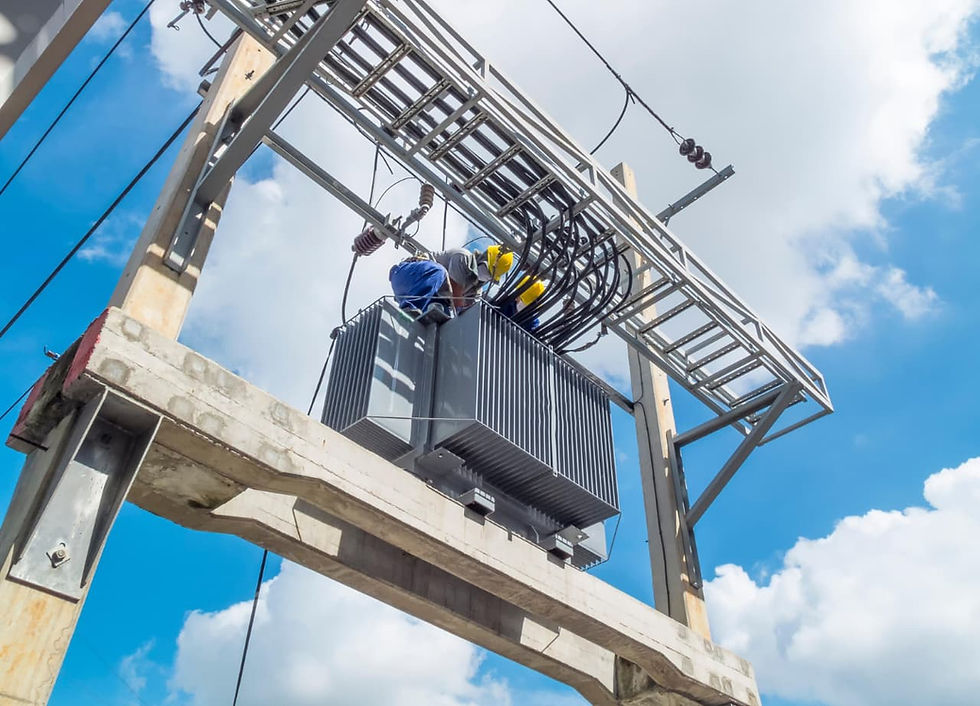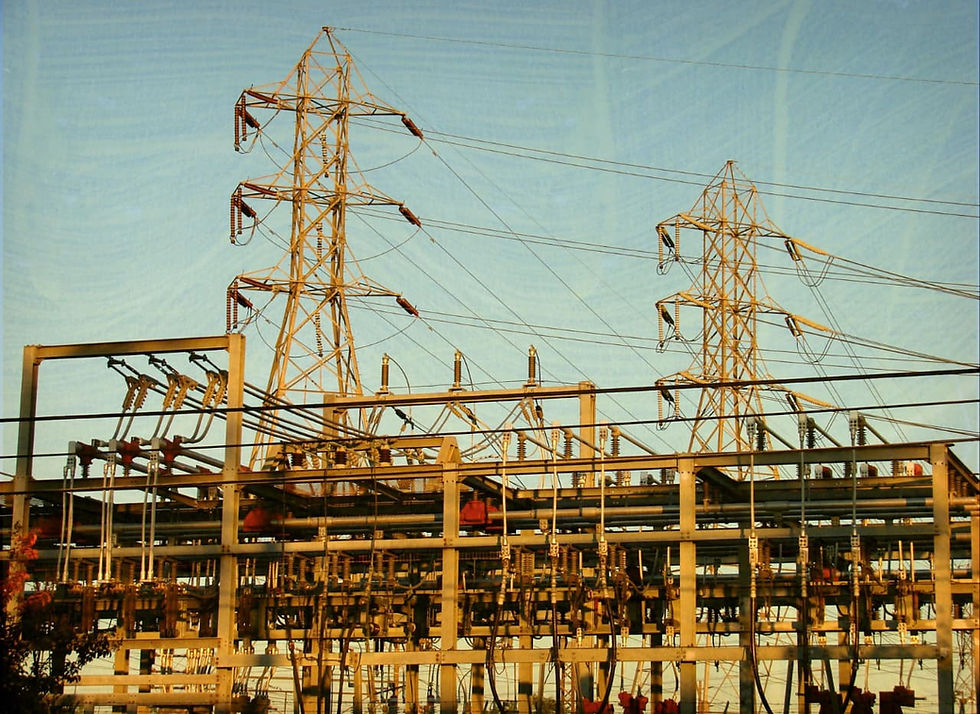Medium voltage transformers: Applications and advantages.
- Grupo Edmar

- Sep 15
- 4 min read
September 15, 2025 - Medium voltage transformers

What is a medium-voltage transformer and what is its function in the electrical system?
A medium-voltage transformer is an electrical device that adapts power between intermediate voltage levels, typically between 1 kV and 34.5 kV. Its main purpose is to receive power from transmission lines or substations and adjust it so it can be efficiently distributed to industries, businesses, and urban developments.
These devices play a key role in the electrical grid because they are the "bridge" between high voltage, used to transport large amounts of energy over long distances, and low voltage, which we consume in homes and offices. Without medium voltage, the electrical grid would be much less efficient and much more expensive to maintain.
Most common applications of medium voltage transformers.
Medium-voltage transformers have a very wide range of applications. Among the most notable are:
Manufacturing and process industries : They can power electric furnaces, high-power motors, air conditioning systems, and complete production lines.
Hospitals and healthcare facilities : where reliable and stable power is required for sensitive medical equipment.
Shopping malls and office complexes : support central air conditioning systems, lighting, elevators, and high-consumption electrical equipment.
Subdivisions and urban developments : By distributing energy at medium voltage, entire areas can be covered with a single transformation point.
Public infrastructure : such as lighting, water pumping stations, and electric transportation systems.
Renewable energy projects : solar or wind farms that generate electricity and require medium-voltage transformers to feed it into the grid.
Main advantages of medium voltage transformers.
Investing in this type of transformer has clear benefits:
Reduction of electrical losses : by working with lower currents, the heat generated in the conductors is minimized.
Greater distribution efficiency : energy travels further without the need for large-gauge cables.
Infrastructure savings : fewer heavy-duty drivers and fewer intermediate transformation points.
Durability and robustness : designed to operate continuously and reliably, even under demanding conditions.
Safety : With adequate protections, they reduce the risk of failures, fires and accidents.
Versatility : They can be installed indoors, outdoors, in urban or industrial areas, with different cooling and insulation methods.

Key factors for selecting the right transformer.
Choosing the right transformer doesn't just depend on the power required. Some points to consider are:
Capacity in kVA : should be sized not only for the current load, but also for future growth.
Transformation ratio : the input and output voltage must be adjusted to the electrical system where it will be integrated.
Load type : motors, lighting, electric ovens or sensitive equipment require different characteristics.
Environmental conditions : humidity, temperature, altitude and exposure influence design and insulation.
Regulations : compliance with national and international standards to ensure safety and reliability.
Maintenance available : Having technical support and spare parts is vital to ensure its useful life.
An example: a plant that expects to double its production in five years should consider a transformer with extra capacity so as not to have to replace it too quickly.
Most commonly used types of medium voltage transformers.
Among the most common models are:
Pole type : widely used in urban and rural distribution due to their practicality and low installation cost.
Pedestal type : ideal for subdivisions and residential areas, safe and aesthetic.
Dry type : without insulating liquids, recommended for interiors, hospitals, shopping centers and office buildings.
Submersible : designed to operate in humid or underground environments, with maximum weather protection.
Each type responds to different needs, providing flexibility in electrical projects of different sizes.
Competitive benefits of working with a specialized manufacturer.
Having a supplier with experience in medium-voltage transformers brings advantages such as:
Custom designs : possibility of manufacturing equipment that adapts to the specific characteristics of a project.
Regulatory compliance : ensuring quality, safety, and operational reliability.
Fast delivery and inventory availability : essential for time-critical projects.
Specialized maintenance : prolongs the life of the equipment and prevents unscheduled shutdowns.

Challenges and considerations of medium voltage transformers.
Although they are highly beneficial, there are also aspects that should not be overlooked:
Initial investment : higher than that of a low-voltage transformer, although it is compensated in the long term.
Physical space : they require secure facilities, with controlled access and adequate ventilation.
Trained personnel : handling and maintenance should only be carried out by professionals.
Permits and regulations : In some cases, medium voltage installation requires authorization from the electric company and regulatory agencies.
Examples of practical cases.
Industrial plants : A company that installs large-capacity electric furnaces requires a medium-voltage transformer to ensure a stable supply.
Expanding residential areas : By using medium-voltage pedestal transformers, several blocks of flats can be supplied without overloading the grid.
Data centers : These require reliable, continuous power; a medium-voltage transformer ensures the stability this type of facility requires.
Medium-voltage transformers are the backbone of modern electrical distribution. They ensure efficiency, scalability, and safety in both industrial and commercial and residential projects. Investing in them means planning ahead, reducing losses, and ensuring a reliable supply.
If you're looking for robust, efficient equipment with technical support, Grupo Edmar can be your best ally in finding the solution that best suits your project's needs.




Comments